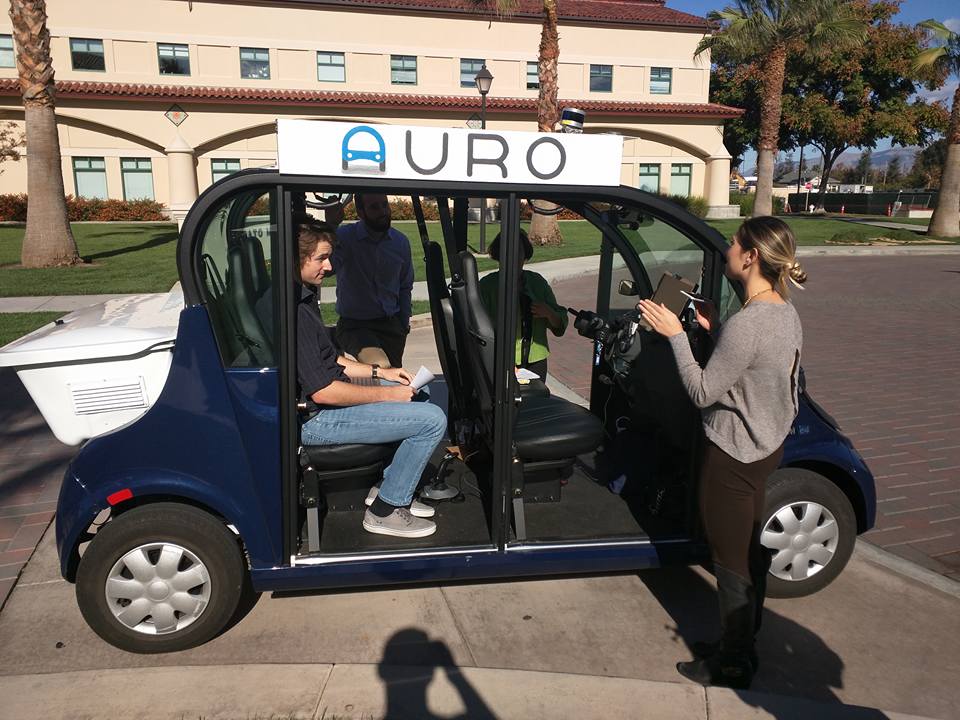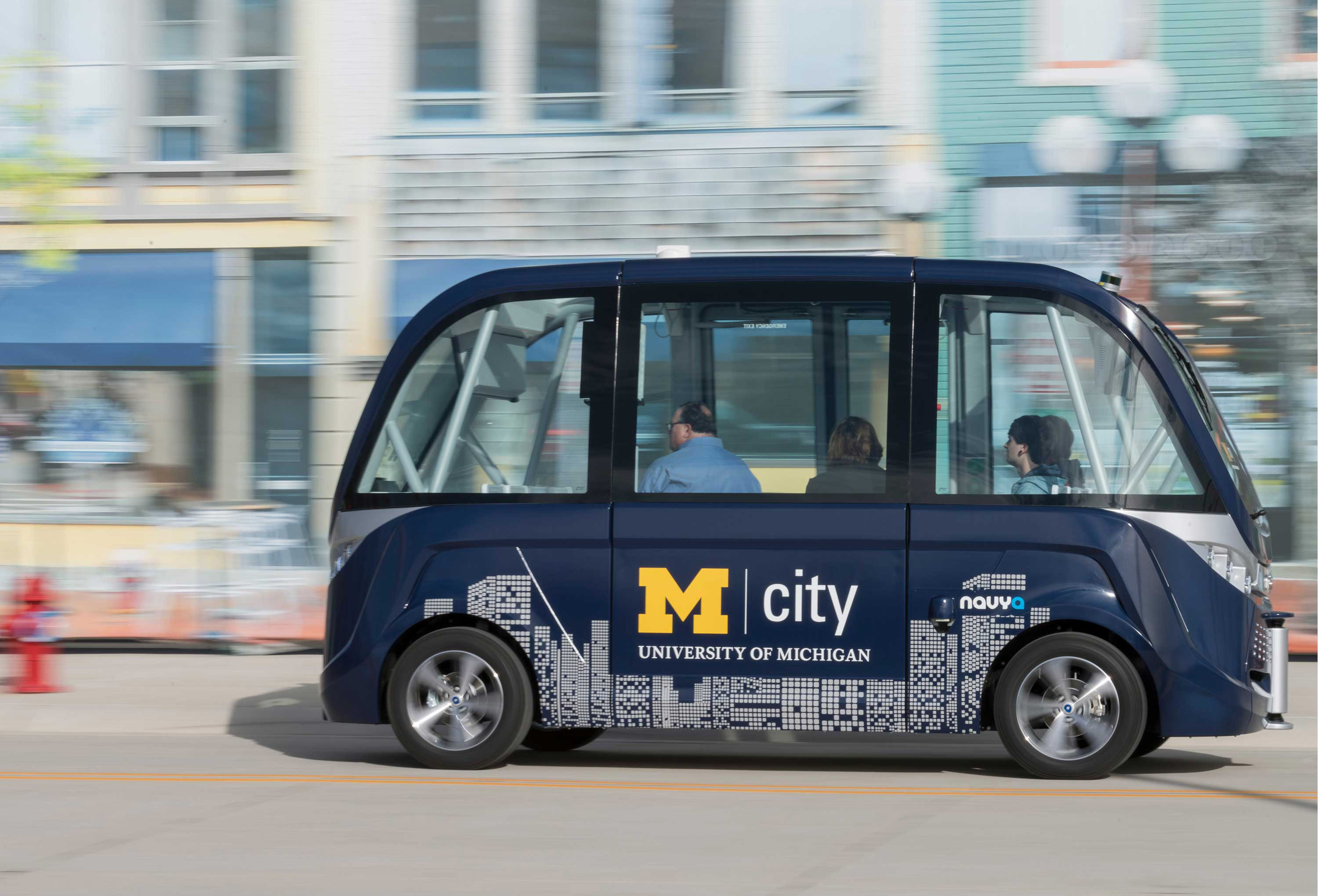June 1, 2017
From Uber to Google to GM, private companies have dominated the headlines around automated vehicle (AV) development – but what is often missed are the universities and public partnerships making significant breakthroughs in understanding the technology and its potential impacts.

Automakers and tech firms have been locked in a competitive race to bring AVs to the market – a trend that has simultaneously driven the technology forward and created insulated silos of experts and proprietary information.
Moving forward, partnerships between universities, public institutions, and private companies are now seeking to bridge knowledge gaps to help the wider public form a larger basis of understanding around the technology.
The Eno Center for Transportation examined the status of policies surrounding AVs in two recent reports, Beyond Speculation: Automated Vehicles and Public Policy and Adopting and Adapting: States and Automated Vehicle Policy. These reports outlined a set of tangible steps for policymakers at all levels of government to advance research efforts on AVs.
In order to better understand the technology powering AVs and their potential impacts on national transportation networks, Eno recommends that states and cities fund AV research efforts at local universities.
University research efforts can take a variety of forms, depending on a region’s priorities on economic, social, and workforce issues. The high concentration of automakers in Detroit, for example, gave birth to partnerships like the University of Michigan’s Mobility Transformation Center (MTC) and the American Center for Mobility (ACM).
MTC is the result of close collaboration between University of Michigan and the Michigan Department of Transportation to augment the state’s competitive advantage in the automotive industry. In addition to providing a research institute to cultivate greater expertise around advanced vehicle technologies, MTC’s research has already demonstrated a profound capability to advance AV development and policies for the entire nation.

MTC’s flagship testing facility, Mcity, recently announced that it has developed a new method for testing AVs – which is especially critical because consumers will need to be certain that AVs are significantly safer than humans before choosing to adopt them. In particular, Mcity suggests that tests will need to demonstrate that AVs are 90 percent safer than human drivers, with an 80 percent confidence interval. This method could streamline the process of certifying AV safety, reducing the certification timeline by a factor of 300 to 100,000 while eliminating up to 99.9 percent of testing costs. If proven, this process could provide NHTSA with a clear path forward in its efforts to ensure the safety of AVs before they are made available to the general public.
The American Center for Mobility, a nonprofit AV testing and development facility in Michigan, is funded through a partnership between the state government and private entities. ACM presents a useful model for developing test sites that is also being implemented in California and Massachusetts. In these cases, the state gave AV developers explicit permission to test their technology in contained areas like military bases and industrial parks. This has allows manufacturers and tech firms to experiment with the technology in controlled environments before placing them on public roads.
ACM, for example, is located at Willow Run, a 335-acre facility that was previously a General Motors powertrain plant and a bomber factory during World War 2. The facility’s existing built infrastructure is currently being retrofitted and expanded to allow developers to test their AVs on reconstructed freeways and simulated urban and rural environments.

There is also a significant opportunity to operate some forms of AVs on university grounds in order to expand mobility options for students and faculty while developing a greater understanding of how AVs will integrate into existing transportation networks. Santa Clara University, for example, entered a lease agreement with Auro Robotics to pilot autonomous shuttles on its campus. This program simultaneously increases mobility on campus while providing the manufacturer and university with valuable insight into how AVs fit into its ecosystem of pedestrians, cyclists, and university vehicles on its roads.
Finally, numerous states and localities have the opportunity to research and test AVs in collaboration with the USDOT Autonomous Vehicle Proving Grounds program. In January, USDOT designated 10 areas of the country to serve as test beds for AV technology that will disseminate their findings to create a broad-based understanding of AV technologies in a variety of environments and climates.
However, states and cities that were not selected as proving grounds by USDOT still have a significant opportunity to contribute to the local, regional, and national understanding of AV technology and its impacts on transportation networks. For example, the Smart Belt Coalition formed by Pennsylvania, Michigan, and Ohio aims to support AV development while encouraging AV developers to invest in testing and manufacturing initiatives in the region.
(Editor’s note: While USDOT has not yet announced the full list of partner organizations, ETW has compiled a list of known organizations and partnerships for each proving ground that can be found here.)
Further insights and opportunities to advance AV research efforts are outlined in Eno’s recent reports, Beyond Speculation and Adopting and Adapting.






